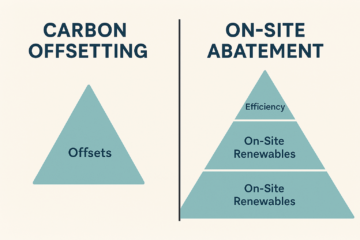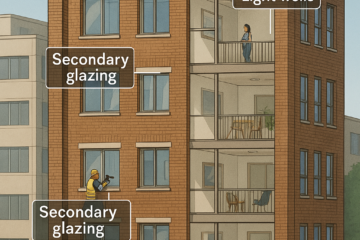Why This Comparison Matters
Since the NCC 2022 update lifted the minimum thermal‑comfort requirement for new dwellings to the NatHERS 7‑star level, many homeowners and developers are asking whether it’s worth stretching to full Passive House certification. Both promise ultra‑low energy bills and healthier indoor environments—but the cash flows look different.
What Each Standard Requires
| Aspect | NatHERS 7‑Star (NCC minimum) | Passive House Classic |
| Performance Metric | Annual heating & cooling load ≤ ~40–60 MJ/m² | Total heating & cooling demand ≤ 15 kWh/m² yr and 0.6 ACH₅₀ airtightness |
| Airtightness Test | Not mandatory | Mandatory blower‑door ≤ 0.6 ACH₅₀ |
| Ventilation | Natural/mechanical; no heat recovery required | Mechanical ventilation with ≥ 75 % heat recovery |
| Verification | AccuRate / HERO simulation | PHPP modelling + on‑site tests |
| Certification Fee (single dwelling) | $0 | ≈ AU$4–6 k |
Upfront Cost Premiums (2025 Benchmarks)
- NatHERS 7‑Star: +1 % to +3 % over 6‑star baseline
- Passive House: +8 % to +12 % depending on form factor and glazing choices
Upfront cost gaps are narrowing as high‑performance windows and HRV units become mainstream.
Energy‑Bill Savings
| Climate Zone | 6‑Star (Baseline) | NatHERS 7‑Star | Passive House |
| Melbourne (CZ 6) | $1,400/yr | $900/yr | $250/yr |
| Brisbane (CZ 2) | $1,050/yr | $720/yr | $220/yr |
| Perth (CZ 5) | $1,200/yr | $820/yr | $230/yr |
Assumes all‑electric home, TOU tariff 32 c/kWh, 200 m² floor area.
Payback Period & Net Present Value (NPV)
| Standard | Extra CapEx | Annual Savings | Simple Payback | 15‑Year NPV (5 % discount) |
| NatHERS 7‑Star | AU$8 k | AU$500 | 16 yrs | –AU$1.2 k |
| Passive House | AU$35 k | AU$1,150 | 30 yrs | +AU$4.5 k (if energy prices rise 4 % p.a.) |
Insight: Passive House shows stronger NPV only when long‑term energy‑price escalation and carbon offsets are factored in. For pure bill savings, NatHERS 7‑Star often wins.
Comfort & Health Benefits
- NatHERS 7‑Star: Significant reduction in cold draughts and overheating days vs 6‑star.
- Passive House: Near‑constant 20–25 °C temperatures year‑round, < 50 % RH and filtered fresh air—ideal for allergy sufferers.
Resale & Asset Value
Real‑estate data from Europe shows Passive House dwellings achieving 3–7 % price premiums. Early evidence in Canberra and Melbourne suggests similar uplift as buyers become energy‑cost conscious.
Decision Framework
- Budget under 5 % premium? Aim for NatHERS 7‑Star with airtightness & HRV “prep” for future upgrades.
- Long‑term owner‑occupier or Build‑to‑Rent asset? Passive House can future‑proof against carbon taxes and attract green‑loan discounts.
- Climate Zones 7 & 8 (cold alpine)? Passive House delivers bigger heating savings—ROI improves.
Quick Tips to Boost ROI Regardless of Path
- Prioritise airtightness—it costs little but drives big efficiency gains.
- Install heat‑pump hot‑water and induction cooking to leverage solar PV.
- Use thermally broken window frames; they benefit both standards.
Case Study – Two Homes in Ballarat
A side‑by‑side project showed the Passive House unit using 82 % less heating energy but costing AU$42 k more to build. Break‑even in year 24 at current tariffs; year 15 if energy inflation hits 5 %.
Bottom Line
For volume builders chasing code compliance at minimal premium, NatHERS 7‑Star is the sweet spot. For owners seeking ultimate comfort, carbon neutrality and long‑term asset value, Passive House justifies the extra outlay—especially as energy prices rise.




0 Comments